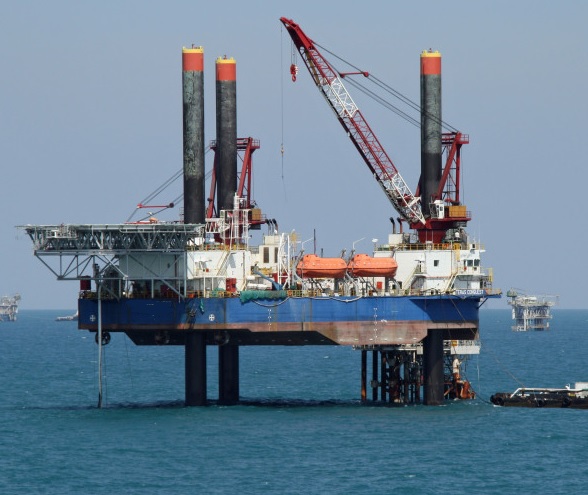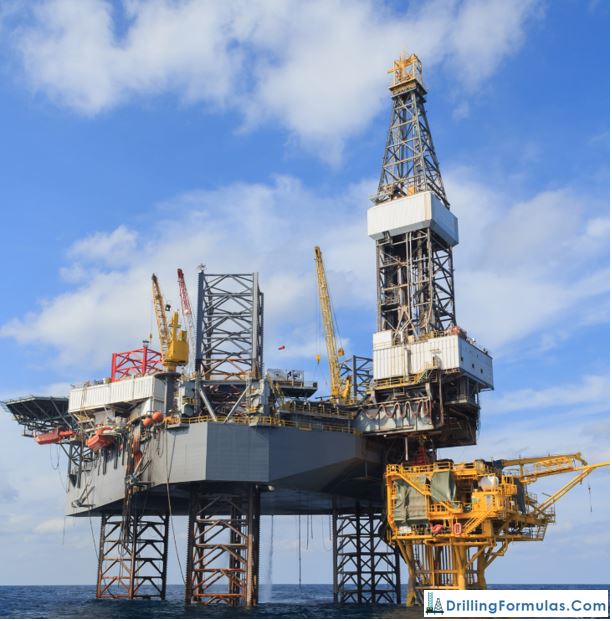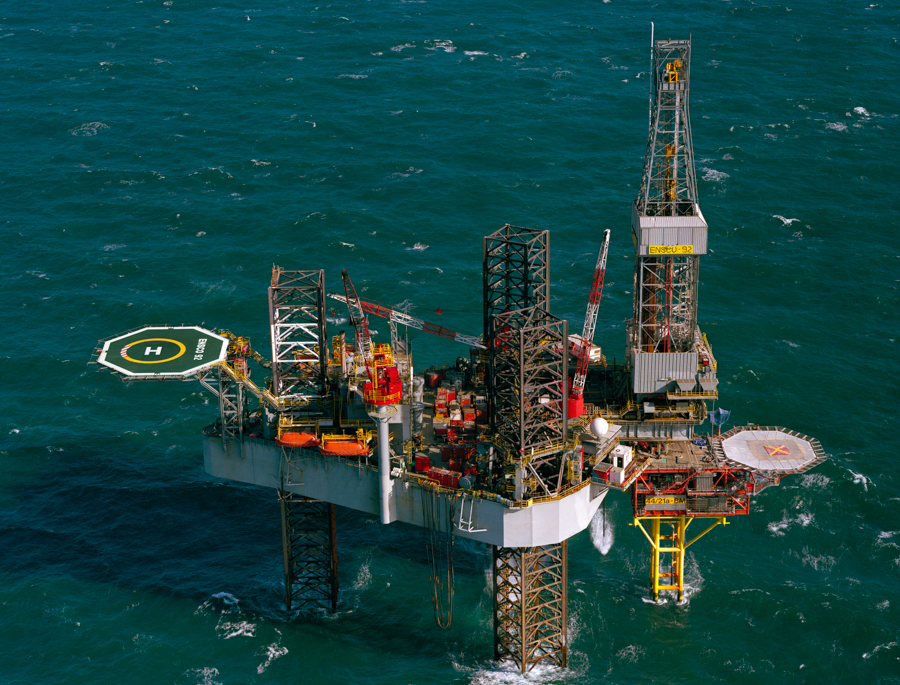This article describes about basic information of jack up legs – Cylindrical Legs vs Trussed Legs, Three-Legged Jack Up vs Four-Legged Jack Up and Three-Chorded Legs vs Four-Chorded Legs.
Cylindrical Legs vs Trussed Legs
Since the hull needs to stay above the storm wave crest, withstand certain pressures, and transmit different loads between the footing and hull, every Jack Up unit will have legs of some sort. Similar to the footings, there are two different types in trussed legs and cylindrical legs.
Cylindrical Legs
Cylindrical legs can vary slightly but the basic premise involves hollow steel tubes. However, some units will have internal stiffening and others may have rack teeth or small holes to allow the hull to move up and down the legs. Generally, these cylindrical legs are used on units that stay shallower than 300 feet of water depth. With the newer units that are designed to work in environment deeper than 300 feet, they tend to use trussed legs and this is because trussed legs require less steel for the same resistance and same elevated response.

Figure 1 – Cylindrical Leg Jack up (dsboffshore.com, 2018)
In terms of advantages, they are the best option for shallow water work as the deck area is smaller and the unit is smaller as a whole. With cylindrical legs, they take up less room on the deck area and they are also extremely simple to use and construct when compared to the trussed legs which require some experience to get started.
Trussed Legs
Talking of trussed legs, they are formed of braces and chords. Very quickly, it is easy to notice that the chords add the stiffness to the unit whilst the braces have been designed to add capacity to the leg. Why are trussed legs chosen over cylindrical legs? Well, it is easier to reach an optimal utilization of steel and this leads to lighter yet stiffer legs; from here, drag loads can be reduced.

Figure 2 – Trussed Legs Jack Up
Three-Legged Jack Up vs Four-Legged Jack Up
If you have already done some research on this topic, you will have seen that very rarely are there more than four legs on a Jack Up unit; however, there are some with three that still keep stability. At the other end of the scale, there are also some with more than four but we are only covering the three- and four-legged options today.
Three-Legged Jack Up
In order to offer the right stability, the three legs will normally be arranged into a triangle and there is a big advantage to this option in that you save materials and remove the need for an unnecessary leg. If the hull size is appropriate, the afloat mode also allows for more deck load as well as weighing less, offering fewer elevating units, using less energy, and requiring less maintenance. With this being said, they have no leg redundancy and they need preload tankage to work efficiently.

Figure 3 – Three-Legged Jack Up
Four-Legged Jack Up
With four legs, they can be arranged into a square or rectangle and these need few or no preload tanks. Why? Because the elevated weight can be used as the preload weight itself by loading two legs at a time. Ultimately, this will save piping and there will be more available space on the hull. Additionally, elevated mode is also stiffer than any three-legged unit since there is a fourth leg in play.
On the downside, the extra leg will add wave, current, and wind loads and this can offset the advantages. Additionally, the weight of the extra leg can be a problem in afloat transit mode because it reduces afloat deck load.

Figure 4 – Four-Legged Jack Up (http://www.swiftdrilling.com, 2018)
Three-Chorded Legs vs Four-Chorded Legs
If we break this guide down even further, we see that trussed legs can have three or four ‘chords’ which are vertical structures. Today, every single Jack Up unit will be made up in either of these formats and the pros and cons of each are near enough the same as the pros and cons for three and four legs. For example, the changes in weight, redundancy, and drag loads still apply. However, there is no change in preloading procedure regardless of whether there are three or four chords.

Figure 5 – A Jack Up with Three-Chorded Legs (eurasiadrilling.com, 2018)

Figure 6 – Four-Chorded Legs (ENSCO PLC, 2018)
References
DSB Offshore Ltd. (2018). Jackup for charter / 56 x 44m, 96m leg length – DSB Offshore Ltd. [online] Available at: https://www.dsboffshore.com/vessel/jackup-for-charter-56-x-44m-96m-leg-length/ [Accessed 18 Aug. 2018].
Oilfieldpix.com. (2018). Offshore Jack Up Drilling Rig Over The Production Platform – Oilfield Royalty Free Stock Images and Illustrations. [online] Available at: http://oilfieldpix.com/photo/578/Offshore-Jack-Up-Drilling-Rig-Over-The-Production-Platform.html [Accessed 18 Aug. 2018].
Swift Drilling Ltd. (2018). Completion, Well Testing | Swift Drilling. [online] Swiftdrilling.com. Available at: http://www.swiftdrilling.com/rig_specs/completion_well_testing [Accessed 18 Aug. 2018].
Eurasiadrilling.com. (2018). Jack-up rigs. [online] Available at: http://www.eurasiadrilling.com/operations/offshore/jack-up-rigs/ [Accessed 18 Aug. 2018].
Enscoplc.com. (2018). Ensco plc – Global Operations – Rig Fleet. [online] Available at: https://www.enscoplc.com/global-operations/rig-fleet/default.aspx [Accessed 18 Aug. 2018].
Mitchell, R.F., Miska, S.Z. and Aadnoy, B.S. (2012) Fundamentals of drilling engineering. Richardson, TX: Society of Petroleum Engineers.
Bork, K. (1995). The rotary rig and its components. Austin: Petroleum extension service. Division of continuing education. University of Texas at Austin.
Davis, L. (1995). Rotary, kelly, swivel, tongs, and top drive. 1st ed. Austin: Petroleum extension service. Division of continuing education. University of Texas at Austin.
Source: Dilling Formulas and Drilling Calculations


